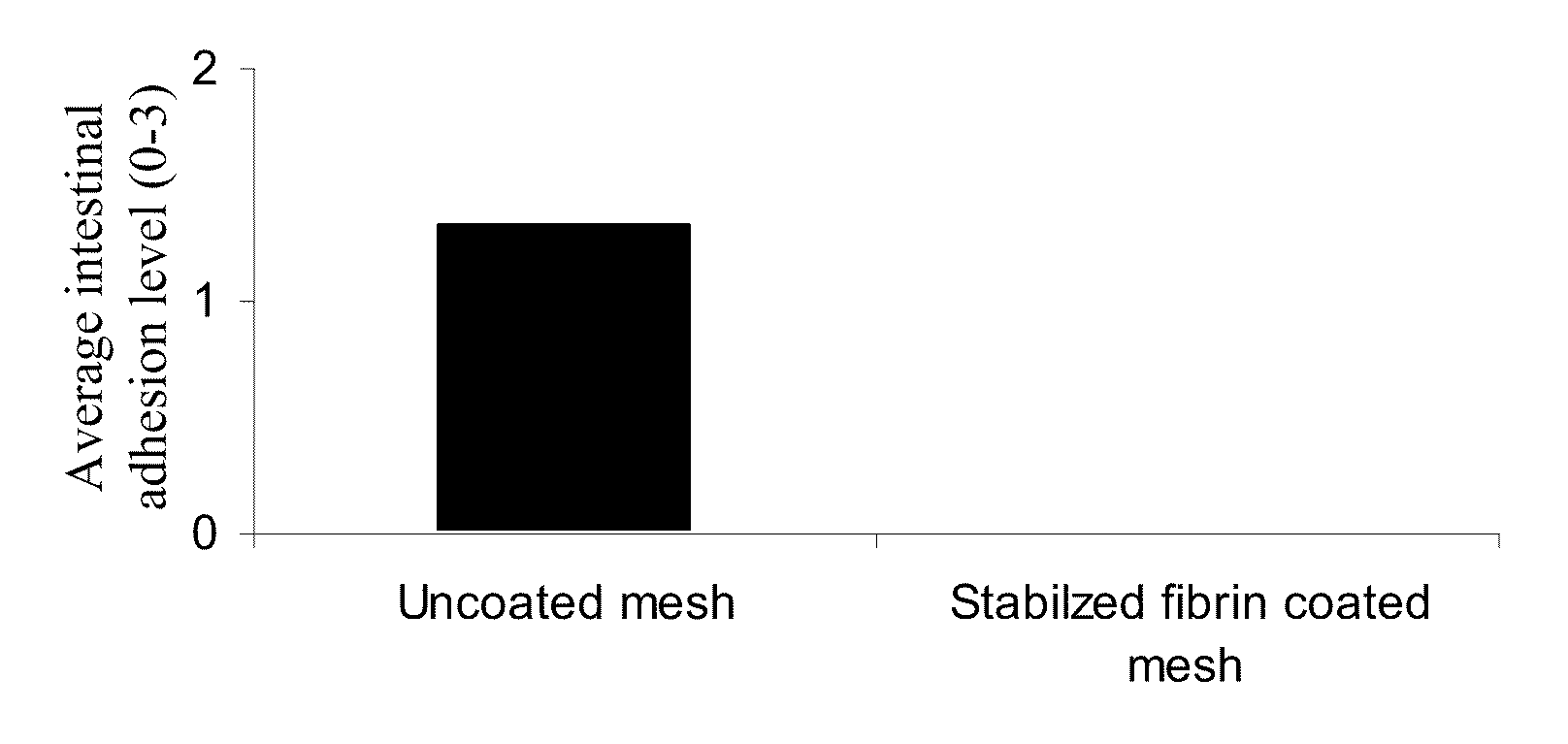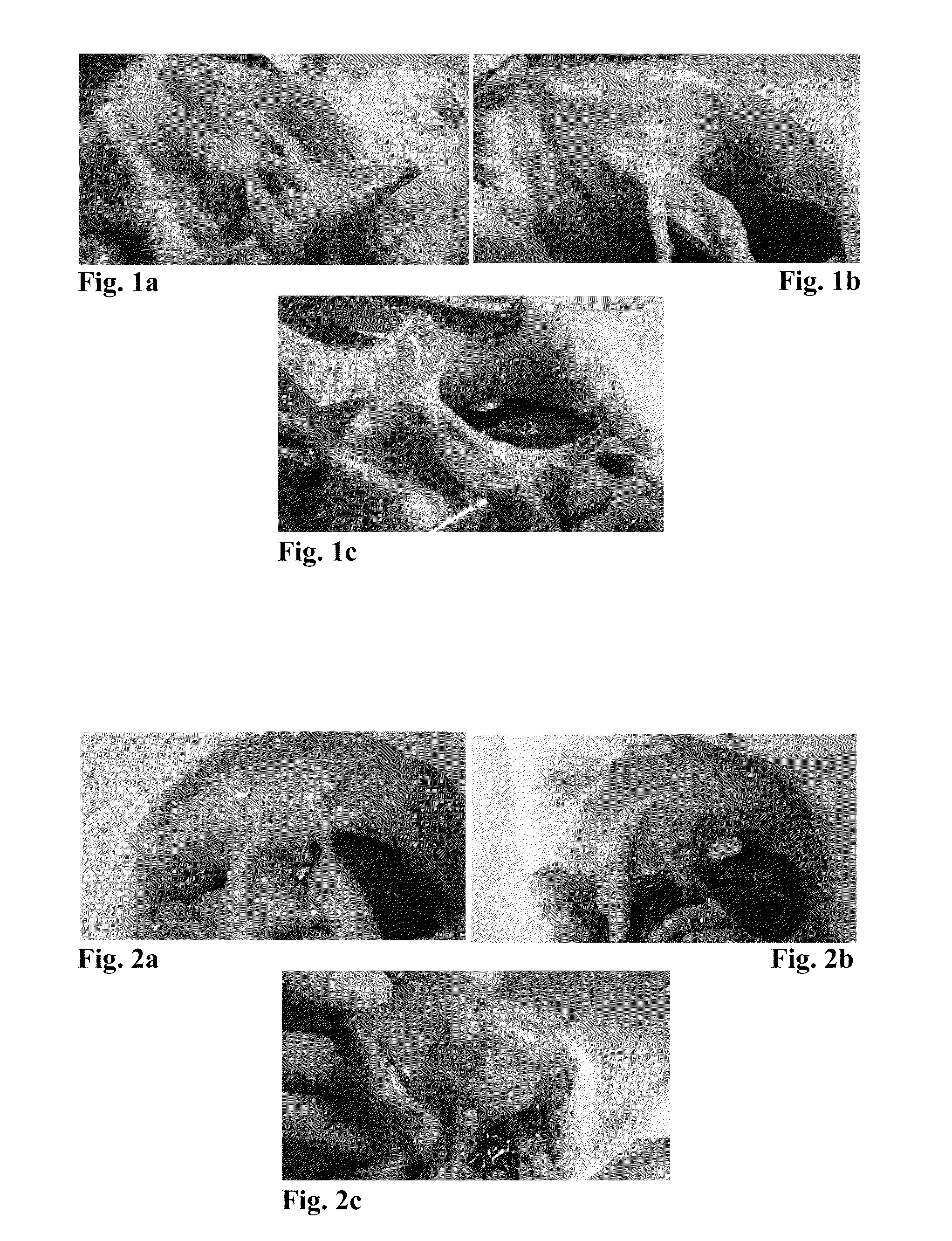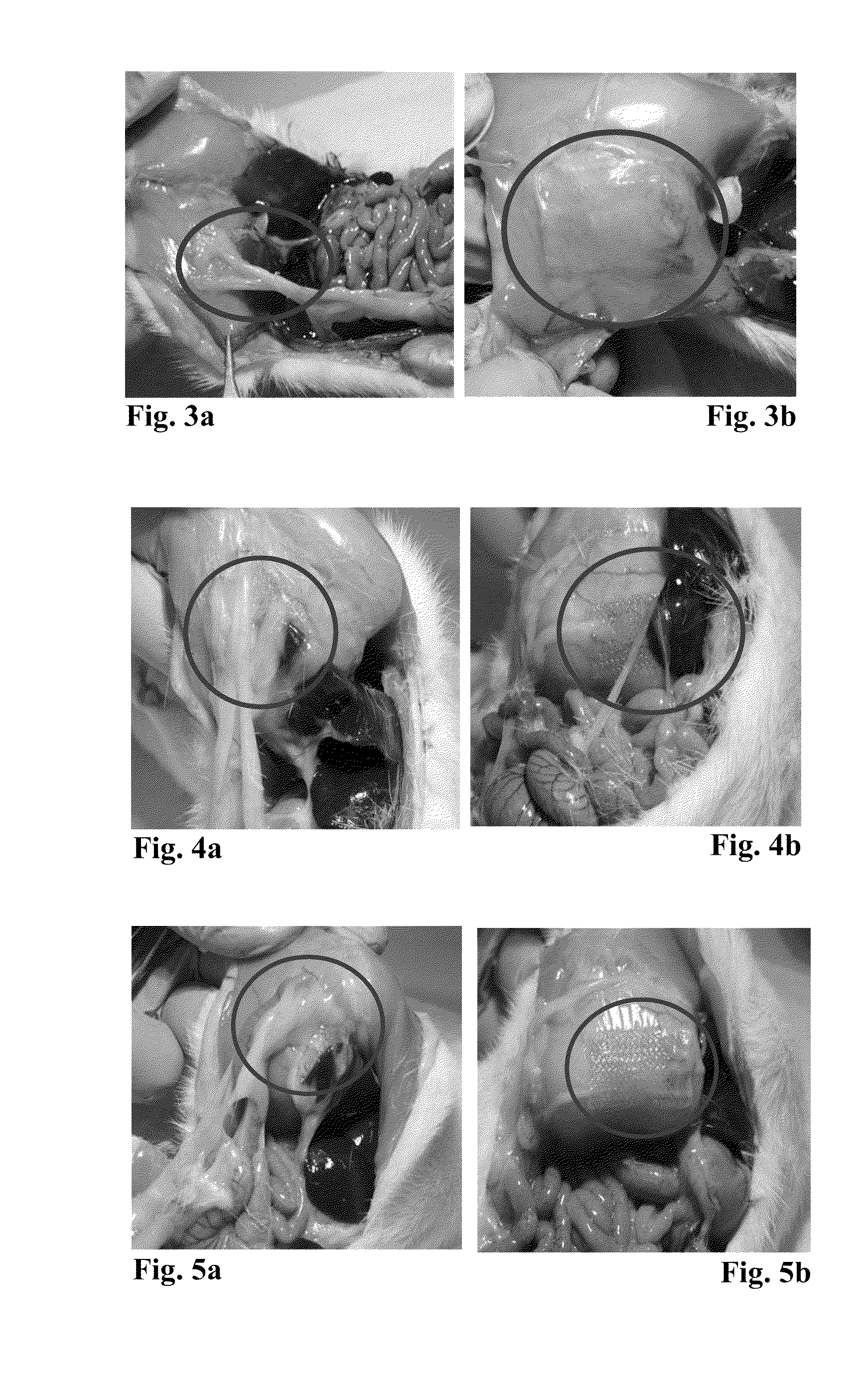Implantable Device Comprising a Substrate Pre-Coated with Stabilized Fibrin
a technology of stabilized fibrin and implantable device, which is applied in the direction of coating, special packaging, packaging, etc., can solve the problems of time-consuming and technically difficult processing, relatively low volume of fibrin glue applied to the injured surface, and in a non-uniform layer of applied material, etc., to achieve convenient delivery, reduce surgery related complications, and be flexible enough
- Summary
- Abstract
- Description
- Claims
- Application Information
AI Technical Summary
Benefits of technology
Problems solved by technology
Method used
Image
Examples
example 1
The Effect of Spraying Fibrin Sealant onto a Mesh Fabric Placed within the Surgery Area on the Adhesion Level
[0169]Adhesions between tissues are undesired side effect in surgery. Fibrin sealant has been used in different experimental studies to decrease adhesion formation (Martin-Cartes et al. 2008; Toosie et al. 2000). Thus, in the following example the mesh was placed within the surgery area, fibrin sealant was sprayed onto the mesh surface and the adhesion level was evaluated 14 or 30 days following the mesh implantation. The Abdominal Wall Defect Model was used as described above. Uncoated mesh fabrics were used as control.
[0170]PPKM602 mesh fabric was cut to 1.7×2.7 cm pieces, placed in a molding device made of Teflon and autoclaved. The mesh fabrics were placed in the surgery site and sprayed with BAC1 and thrombin (for the composition see materials and methods). Equal amounts of these two components were used with a total volume of 0.3 or 0.6 ml.
[0171]The postoperative adhesi...
example 2
The Anti-Adhesion Effect of a Mesh Pre-Coated with Wet Fibrin Sealant
[0173]The previous example shows the beneficial effect of applying fibrin sealant onto a mesh fabric placed within the surgery area in reducing adhesions in the operated area.
[0174]The present example was aimed to determine the anti-adhesive effect of a pre-coated and wet fibrin sealant mesh in surgery.
[0175]For this purpose, the PPKM602 mesh fabric was cut to 1.7×2.7 cm pieces, placed in a molding device and autoclaved. This step was followed by spraying the fibrin sealant components (BAC1 and thrombin in equal quantities) onto one side of the mesh fabrics (the total amount of the components are listed in Table 3 under FS). During the spraying procedure the mesh fabrics were placed in the molding device. The sprayed samples were incubated in the refrigerator (4° C.) for 3 days [the coated meshes were kept wet during storage because of the relative high humidity (80-95%) in the refrigerator]. Uncoated-autoclaved sa...
example 3
Effect of Freeze Drying or Vacuum Drying Procedure on the Stability of the Fibrin Sealant Coated Layer
[0181]In the previous example it was shown that wet pre-coated mesh fabrics are better in adhesion prevention than in situ spraying of fibrin sealant. To provide a pre-coated mesh with an extended shelf life, the pre-coated mesh can be supplied in a dry form and re-hydrated before application into the wounded tissue if desired. The following example was aimed to examine the stability of a pre-coated and dried fibrin sealant mesh. Two drying procedures were tested: freeze or vacuum drying.
[0182]For this purpose, the mesh fabrics were cut to 2.54×2.54 cm (6.45 cm2) pieces, coated with an equal volume of thrombin and BAC1 (the total fibrin sealant amount used for each mesh is listed in Table 4 and 5 under wet FS). Then, the coated meshes were either freeze or vacuum dried as described above. In this experiment the meshes were not subjected to surface plasma activation prior to the coat...
PUM
| Property | Measurement | Unit |
|---|---|---|
| molecular weight | aaaaa | aaaaa |
| temperature | aaaaa | aaaaa |
| concentration | aaaaa | aaaaa |
Abstract
Description
Claims
Application Information
 Login to View More
Login to View More - R&D
- Intellectual Property
- Life Sciences
- Materials
- Tech Scout
- Unparalleled Data Quality
- Higher Quality Content
- 60% Fewer Hallucinations
Browse by: Latest US Patents, China's latest patents, Technical Efficacy Thesaurus, Application Domain, Technology Topic, Popular Technical Reports.
© 2025 PatSnap. All rights reserved.Legal|Privacy policy|Modern Slavery Act Transparency Statement|Sitemap|About US| Contact US: help@patsnap.com



